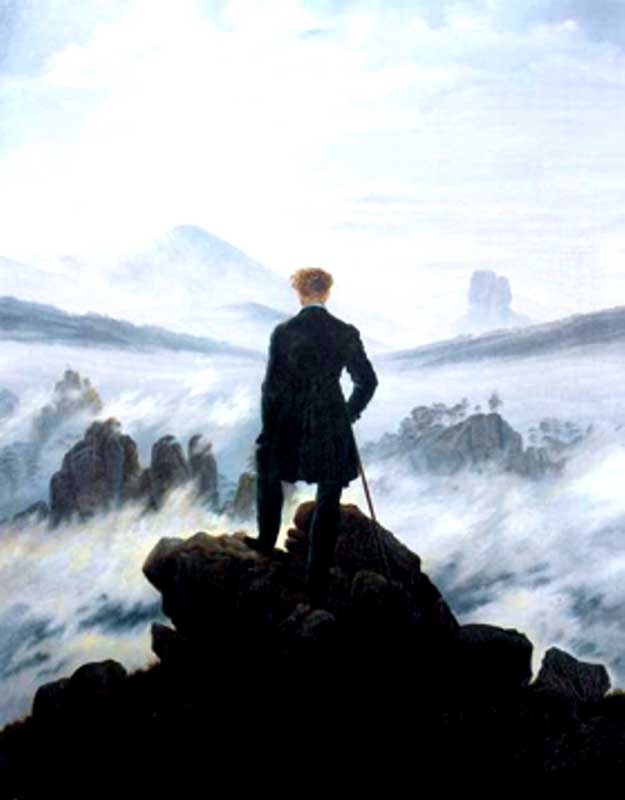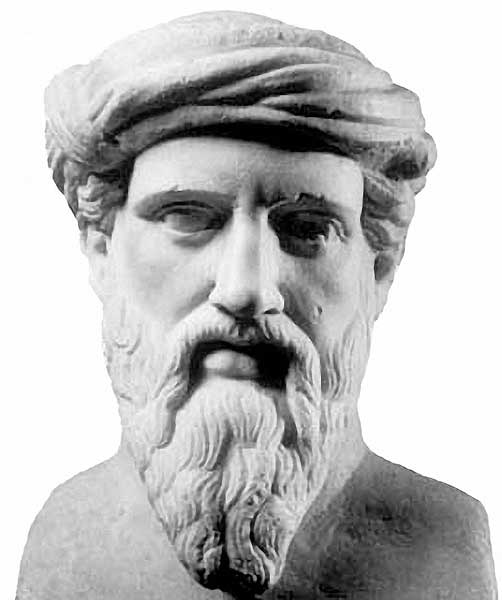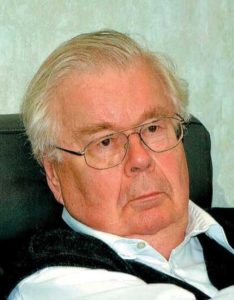Harmonics as a solution for our divided world today
Author: Dr. Hans G. Weidinger
Harmony, measure and moderation. Life in harmony with nature – these have always been the basic ideas of philosophical currents. Tones and frequencies can lead us back to this harmony. The author gives us an overview of harmonics, which goes back to Pythagoras. Especially in the divided world we live in today, a return to these wisdoms of a balanced life is needed.
Harmonics is unfortunately a term used in different ways. In music education, it stands for harmony theory, i.e., the observance of rules for the harmonious sounding together of tones in a composition. The harmony we are talking about, does not contradict such a harmony theory, but it means something different. It is a holistic principle of experience.There rational-objective thinking and subjective-emotional feeling come together to form a holistic classification of the outer and inner world of man.
This harmonic goes back to Pythagoras (ca. 570-490 B.C.) and is therefore also called “Pythagorean harmonic”. He found out through experiments on a monochord that the integer division of a string produces different tones. These tones arrange the intervals that form the basis of all music: Octaves, fifths, thirds, etc.
 Oscillations by integer division of a string
Oscillations by integer division of a string
From this he gained the insight that earthly music is a reflection of the harmony in the cosmos.
So the Pythagorean teaching and afterwards the school of Plato concluded that also the right life of the human being must correspond to harmonious conditions.
In particular, it resulted for the people back then in their thinking and their forms following the recognized rules of a harmoniously ordered world. Thus, in our cultural area, this idea shaped the norms of artistic creation. Especially music and the performing arts, for many centuries. With the revival of independent thinking and questions about meaning and order in nature, the Pythagorean teachings also began to regain a foothold. And then Copernicus and his work “harmonices mundi” achieved the breakthrough on what we still call “harmonic thinking” today.
With him the old vision became alive again that elementary structures work behind the variety of the appearances of this world.
With these structures we have learned a lot of quantitative things in the development of the sciences. Especially in natural sciences.But we also begin – again – to understand that it must be felt qualitatively for a holistic experience of the world and of life to emerge from it. This holistic experience of what “holds the world together at its core” is what harmonics is all about.
OF THE CORRESPONDENCE OF NUMBER AND TONE
The vibration caused by a string leads to a vibration in the air surrounding it. It causes excitations in the ear, which lead the brain to hearing a tone. Both the frequency of these vibrations and the corresponding wavelength can be measured with suitable instruments. Hermann Helmholtz already showed this. Then a causal-logical explanation describes this. This description is the result of objective observations. It is scientifically “true” only if it is independent of the observer and the describer.
Hearing a sound, however, is the result of individually personal reactions in humans. Thus it leads to a subjective sensation that is not objectively comprehensible by other people. This sensation is dependent on the individual nature of each person. Disposition, upbringing and ever new experiences shape it.
And none of our senses is so originally and deeply anchored with the elementary conditionings of each individual human being. With his personal evaluation of each experience, as the sense of hearing.
Hans Kayser, the progenitor of harmonics in our time, was deeply aware of this difference. For this reason he coined the term “correspondence” to describe the relationship between number and tone. To this “correspondence” he assigns, to distinguish it from the scientific (causal-)logical way of thinking. In order to understand what Hans Kayser is about with his introduction of the term “correspondence”, he is quoted here, in excerpts:
The causal thinking seduces all too much to a false certainty, to an attitude of self-evidence (“For what one possesses in black and white …”!), to a loss of experience compared to the established facts and laws.
 Caspar David Friedrich – Wanderer above the Sea of Fog (german: Der Wanderer über dem Nebelmeer)
Caspar David Friedrich – Wanderer above the Sea of Fog (german: Der Wanderer über dem Nebelmeer)
The theory of correspondence on the other hand – of which the harmonic one is part of- starts from a content of experience. In the above examples from the dynamics of the cadence and the psychic content of the third. And now we see where and in which areas sufficient analogues to this original content of experience can be found. In harmony when we speak of this we call it a prototype or harmonic value form.
Here, the thinking is not causally advanced in the direction of reason and consequence (justification) to a “principally unattainable goal”. But the content of experience of the initial position is carried on and transferred to the corresponding analogues.
Hereby a fundamentally different attitude arises within our cognitive faculty.
There, in scientific thinking, a restlessness of wanting to know towards the divergence of a never attainable goal, connects with supposedly “final” results. Also with the ever sharper centering on pure logic as the tool of this thinking. Here, in the correspondence teachings, a rest of the inner view, hearing towards the convergence of archetypal prototypes and value forms, connects with ideas in the Platonic sense. Also in the centering on the “intellectus archetypus” (Kant) of our soul.
THE HISTORY OF HARMONICS
The history of harmonics goes back as far as we can look back into the history of human culture. Thus into the history of the preserved monuments of this culture. Even if, the further back we can look, we no longer know the builders of these monuments, and can only guess at their thoughts and motives. For our present understanding of the development of harmonics up to our days, however, it is important to get to know those stations. There we can also understand which reasons and considerations prompted the thinkers of those times to consciously develop and apply harmonic theories and principles.
Therefore, the time travel attempted here is primarily a recalling of the people whose thoughtful inquiries into the world surrounding them led them to the statements and representations that we now understand as milestones in the history of harmonics.
Pythagoras (ca. 570-490 B.C.)
The philosopher and scientist Pythagoras, as well as the union of the Pythagoreans, can be regarded as the founding fathers of the harmonic philosophy of the Occident. Of Pythagoras himself we know very little, for he left no writings. What we know about him is mainly based on isolated news in Herodotus (ca. 490-420 B.C.) and Plato (427-347 B.C.). In addition there are some traditions in Aristotle (384 B.C.) and pupils of him, who still knew Philolaos. The last eyewitness of Pythagoras.
“New consciousness” has now become a buzzword ringing for wellness advertising to diverse approaches. From attaining a “new spirituality” to ideas and proposals for a fundamental improvement of the world. The background to this is a profound uncertainty – not only with regard to spiritual-cultural orientation. But also in particular today because of concerns about the dissolution of the basic social consensus, right up to politically and economically motivated existential fears.
 Pythagoras
Pythagoras
Media of all kinds exaggerates much of this today. However, there are also counter-examples, such as this magazine (Tattva Viveka) with its effort. It strives to bring together advocates of ideas from science and spirituality that often appear controversial on the surface. Therefore, this article is not only, but also an attempt to show how the harmonics described here can contribute to bringing diverging spiritual efforts back together.
The author of this article, himself, a natural scientist with a background in physics and physical chemistry, has been registering for a long time how the “exact” natural sciences and the philosophical currents of our time, are losing acceptance. These two poles partly orient themselves at the serious seekers and partly rub against them – still they lose recognition. Their representatives do not even notice this for the most part or do not take it seriously. For them only the “objectively secured” findings of science play a role. It is no desire to have subjective participation in these findings, because of the danger of their “general validity”. Already Hans Kayser objected to this one-sided self-understanding, because it creates a position of man, which R. M. Rilke characterized now about 100 years ago in this way:
Always turned towards creation, we see
we see only on it the reflection of the Frein,
obscured by us. Or that an animal,
a mute one, looks up, calmly through us.
This is called destiny: to be opposite
and nothing but that and always opposite.
– R.M. Rilke, 8th Duino Elegy
 About the author
About the author
Dr. Hans G. Weidinger (Dipl. Phys.), born in 1932 in Bamberg. Studied physics and physical chemistry, and art and cultural history on the side. Initially active in industry and later as a freelance technical consultant internationally. He takes interest in the development of modern natural science as well as (Pythagorean) harmonics as further developed by Hans Kayser.
This article appeared originally on the German Homepage Tattva Viveka: Pythagoras und die Harmonie des Kosmos




